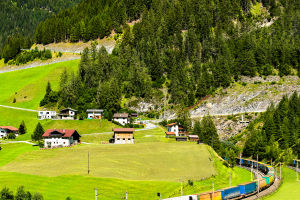Kefalonia, the largest island in the Ionian Sea, is located to the west of Greece. Its name is believed to be derived from the ancient Greek mythological hero Kephalos.
The island is famous for being the home of Odysseus in Homer's epic poem, and he is referred to as the "King of the Kefalians" by Homer. In addition to its mythological and historical significance, Kefalonia boasts stunning beaches, fascinating caves, and a thriving olive oil industry.
These attractions, combined with its proximity to the Italian mainland, have made it a popular tourist destination.
One of the island's standout features is its beautiful beaches and pristine waters. While it may not be as famous as the Holy Island and Rice Island, Kefalonia offers a serene atmosphere. The absence of large tourist groups allows visitors to enjoy the island's natural elegance and peacefulness.
Moreover, the relatively lower prices compared to other popular destinations make it an appealing choice for budget-conscious travelers.
Kefalonia's landscape is characterized by olive groves, vineyards, and clusters of charming red-roofed houses. The island's fertile valleys, such as the Omará Valley, are ideal for cultivating vines and olives. Over one million olive trees cover approximately 55% of the island, making olive oil production a significant part of Kefalonia's economy.
Mount Ainos, centrally located in the southern part of Kefalonia, stands as a prominent natural landmark. It is situated around 30 kilometers from the capital city of Argostoli. Designated as a National Park in 1962, Mount Ainos encompasses more than 3,000 hectares and boasts impressive biodiversity.
The park's highest peak reaches 1,628 meters above sea level, offering breathtaking views.
The ecological diversity and abundance of flora and fauna in the Mount Ainos region make it an ideal destination for hiking enthusiasts. Whether you choose a shorter or longer trail, you will have the opportunity to immerse yourself in the unique natural beauty of Mount Ainos. The famous fir forest, known as Abies Cephalonica or Greek fir, covers two-thirds of the mountain.
This particular species of fir tree is native to Kefalonia and is considered one of the rarest in Europe. It can reach heights of 25-35 meters and has needle-like, flattened leaves.
Apart from the fir forests, the forests of Mount Ainos are home to other tree species such as Wallonia oaks, European hops hornbeam, and holm oak. The diverse vegetation includes smaller trees and shrubs like myrtle, lentil, carob, poppy, amaranth, heather, and thyme.
Additionally, characteristic Greek plants such as strawberry trees and wild olives can be found throughout the area. The lush green forest is adorned with vibrant wildflowers and dotted with mushrooms, adding splashes of color to the surroundings.
Kefalonia offers a captivating blend of mythology, history, natural beauty, and cultural heritage. Its golden beaches, clear waters, olive groves, vineyards, and enchanting caves make it a sought-after destination for tourists. The island's proximity to the Italian mainland and the tranquility it offers, along with its olive oil production, contribute to its thriving economy.
Mount Ainos, with its diverse flora and fauna, including the rare Greek fir, provides nature lovers and hikers with a unique and unforgettable experience. Whether exploring the beaches, the forests, or the mythological sites, Kefalonia has something to offer everyone seeking an indulgent vacation in a Greek paradise.


